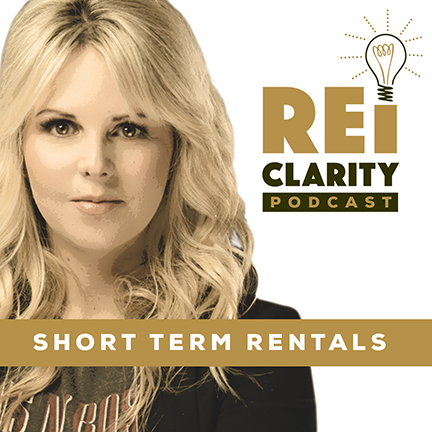
Our guest today is Avery Carl, a real estate investor with over 30 short term rentals. She also has long term rentals and helps people buy and sell vacation homes as a realtor. She shares with us her financing strategies, how to work the different markets, and a little bit about property management. If you’ve been thinking about growing your short term rental portfolio or adding short term rentals to your strategy, then this episode is for you! To learn more about Avery and her journey, visit reiclarity.com!
“We had one downpayment worth of capital left to invest in something and so we thought, well, maybe we’ll do an Airbnb project.”
04:56
Avery and her husband moved to Nashville from Brooklyn in 2013. She wasn’t licensed yet, but they wanted to buy a rental home. The property they purchased is still one of their highest performing rental homes. After this first success, they decided to scale up and invest in Airbnbs. They started to buy single-family cabins in the Smoky Mountains, 3 hours away from the volatile Nashville market.
“The regional, drivable vacation rental markets have fared the best for different reasons in both recessions.”
08:04
Avery mentioned 3 main markets for short term rentals:
- The metro markets (New York, Austin, etc)
- Vacation, fly-to rental homes (Hawaii, Disney, Colorado, Utah ski towns)
- Regional, driveable vacation rental markets
When it comes to the short-term rental market, Avery sees many similarities between the current pandemic and the 2008 recession. According to her, the regional, drivable vacation rental market has fared the best in both recessions. In 2008, people didn’t have enough money to spend on elaborate vacations, but they could afford a 5-hour drive for a weekend holiday. In current COVID times, people can’t fly or travel very far, that is why they like to spend time in an easily reachable vacation home.
Avery has long-term rentals along with her vacation rentals, and she chose the same regional market. These rentals are affordable $6-700/month places.
“There’s a difference between debt and leverage. There is such a thing as good debt and bad debt.”
22:04
Avery has 30 short-term rentals. She mentioned a few different ways to finance these deals. She used a 10%-down vacation home loan on some of her properties. The down-side was that it could only be used once per market, as the properties have to be at least 65 miles apart from each other. Her other strategy was to take out the cash from her properties and enroll that into her next purchase.
Avery and her husband have both maxed out their 10 conventional loans, however, she differentiates between good debt and bad debt. Her debt is more like leverage.
28:01
Avery’s 3 pieces of advice for real estate investors on how to take the short term investing leap:
- Analyze the market, but not so much to get analysis paralysis.
- Take the risk, because you can only learn by doing.
- Even if you don’t have a lot of cash available, take out equity on your primary home or do a HELOC.
Mentioned in the show:
Learn how to grow your REI portfolio and reach incredible lasting success the right way! Visit us here for everything you need to know: www.shineinsurance.com/reiclarity.
Special thanks to Avery Carl for taking the time to share so many great insights with us
If you enjoyed this podcast, there’s a couple of things we need you to do right now:
- SUBSCRIBE to REI Clarity on Apple Podcast, Spotify, or wherever you listen to podcasts
- While your there, please RATE & REVIEW the show
- SHARE with friends
- Finally, please, JOIN the REI Clarity Facebook Group
Then, please share the show with whoever you think it will inspire.
Until the next time, We truly appreciate you listening.
Need the REI Insurance Guy?

More great stories & information at:

